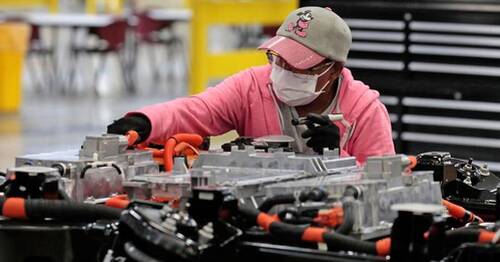
Payrolls rose 263,000 in September as the unemployment rate fell to 3.5% amid Fed rate hikes
Job growth fell short of expectations in September as efforts by the Federal Reserve to slow inflation took their toll on hiring, the Labor Department reported Friday.
Nonfarm payrolls increased by 263,000 for the month, compared to the Dow Jones estimate of 275,000. The unemployment rate was 3.5% versus the forecast of 3.7%.
September’s payroll figure marked a deceleration from the 315,000 gain in August and tied for the lowest monthly increase since April 2021.
In the closely watched wage numbers, average hourly earnings rose 0.3% on the month, in line with estimates, and 5% from a year ago, an increase that is still well above the pre-pandemic norm but 0.1 percentage point below the forecast.
Stock market futures moved lower after the release while government bond yields rose.
From a sector view, leisure and hospitality led the gains with an increase of 83,000, a gain that still left the industry 1.1 million jobs short of its February 2020 pre-pandemic levels.
Elsewhere, health care added 60,000, professional and business services rose 46,000 and manufacturing contributed 22,000. Construction was up 19,000 and wholesale trade was up 11,000.
On the negative side, financial activities and transportation and warehousing both saw losses of 8,000 jobs.
The report comes amid a months-long Federal Reserve effort to bring down inflation running near its highest annual rate in more than 40 years. The central bank has raised rates five times this year for a total of 3 percentage points and is expected to continue hiking through at least the end of the year.
More from CNBC
- Here’s what Musk’s potential takeover of Twitter could mean for Trump
- Samsung profit plunges in first drop since 2019 as chipmakers feel bite
- Polestar confirms it will deliver 50,000 electric vehicles in 2022
Despite the increases, job growth had remained relatively strong as companies face a massive mismatch between supply and demand that has left about 1.7 job openings for every available worker. That in turn has helped drive up wages, though the increase in average hourly earnings has fallen well short of the inflation rate, which most recently was at 8.3%.
Fed officials including Chairman Jerome Powell have said they expect the rate hikes to inflict “some pain” on the economy. Federal Open Market Committee members in September indicated they expect the unemployment rate to rise to 4.4% in 2023 and hold around that level before dropping down to 4% over the long run.






